Gigabyte Aorus Motherboards: A Closer Look
January 17, 2017 | 18:27

Each Aorus Z270 motherboard features a pair of USB 3.1 Gen 2 ports on the rear I/O panel: one Type-A and one Type-C. A feature called USB DAC-Up 2 is also present on al six models, again built into the back panel ports. It's essentially a pair of USB ports that have dedicated power with better regulated voltage to reduce noise and improve signal quality for audio products like USB-based headsets. For these boards, it's been refined so that there's less voltage drop in longer cables that are starting to become more common as VR takes off.
For storage, every Aorus board comes with a healthy selection of connectors for PCI-E SSDs: at least one U.2 port and two M.2 ports (one 2280, one 22110), both of which support PCI-E and SATA SSDs. Three-way PCI-E RAID is another feature common to all, just in case you're looking to get some seriously ridiculous speeds by striping multiple PCI-E drives.
Gigabyte's Ultra Durable PCI-E and DIMM armour solutions are also common across the range, with the former featuring a unique double locking mechanism and a one-piece stainless steel design. Broken PCI-E slots from excessively heavy graphics cards aren't unheard of, so there is value in things like this. Other Aorus features related to build quality and reliability include Dual BIOS, Ultra Durable black capacitors, gold-plated CPU socket pins, and anti-sulfur resistors.
POST code LED readouts have been around for ages as a means of troubleshooting, but Gigabyte's Aorus boards now also include labelled LEDs (CPU, DRAM, VGA, and Boot) so you can quickly identify the troublesome part instead of delving into the manual. We also think the G-Connector is a neat idea; it's essentially a removable, single-piece, front panel header connector that lets you hook up all the fiddly front panel pins before attaching it to the actual motherboard pins.
Moving onto differences and product segmentation, we'll start with networking. The entry-level model, the Z270X-Gaming K5, sports a single Killer E2500 LAN port. For the next three models up, Gigabyte retains this but also adds a second, Intel-powered Gigabit LAN port. It's not until you get to the pricey Z270X-Gaming 8 that Wi-Fi is added to the mix, again via Killer and its Wireless AC 1535 chip. The flagship Z270X-Gaming 9 drops Intel again in favour of a triple Killer arrangement – dual Killer LAN ports and the same Wi-Fi connectivity as the Gaming 8.
Audio is another means of separating the boards, although Gigabyte does use Nichicon Fine Gold capacitors on all models. The Gaming K5, Gaming 5, and Gaming K7 use the eight-channel Realtek ALC1220 codec and include a single swappable op-amp. The Gaming 7 introduces the dedicated Creative Sound Core3D quad-core processor, and for the Gaming 8 and Gaming 9 this is further upgraded with red additional WIMA FKP2 capacitors and an additional two upgradable op-amps (three total). We tested the Creative processor in our Gaming 7 reviews, and its results in RightMark were excellent – well beyond what we'd seen with boards that stuck with ALC1220.
While USB 3.1 Gen 2 is common to all six boards, only the top three have Intel-powered ports and, consequently, Thunderbolt 3 support as well. The Gaming 8 and Gaming 9 also use HDMI 2.0 in place of HDMI 1.4 on the other four, have two U.2 ports instead of one, and support Q-Flash Plus, which is Gigayte's new BIOS upgrading feature that allows you do flash the BIOS using just a memory stick and power – no CPU or memory needed.
Reserved solely for the Z270X-Gaming 9 is a PEX8747 PCI-E lane splitter that enables true four-way GPU support as well as x16/x16 dual-GPU setups. X99 tends to be the favoured platform for multi-GPU setups, and four-way configurations are becoming less and less relevant, with Nvidia all but abandoning it. Even so, it's understandable that only the flagship board would have this feature – the PEX7847 chip is not cheap to include.
It's interesting times for motherboards. It's been the case for a fair few generations now that there's really very little between them in terms of core performance. Even when it comes to overclocking, when you're limited by air or water-cooling, as the vast majority of us are, there's often no major difference between a £100 motherboard and a £400 one, other than perhaps the amount of voltage needed to hit your CPU's limit. As a result, we've seen manufacturers push aesthetics and system customisation hard in an effort to persuade customers that higher-end parts are worth buying, as evidenced by features like RGB Fusion and Smart Fan 5 on these Aorus boards.
The aim to hit multiple price points and cover the market has also seen the development of numerous features (both hardware- and software-based) from all the major manufacturers – as should be clear by now, Gigabyte's Aorus motherboards have their fair share of these. However, the end result is a seriously crowded market: There are six Aorus boards, and that's just for a single chipset and doesn't include any non-Aorus Gigabyte boards, of which there are many more. Add MSI, Asus, ASRock and others to the list and you're left with a pretty overwhelming level of choice that often involves tedious trips to feature lists. We don't want to discourage innovation – many of the features discussed here have genuine usefulness and help push the boundaries of computing further – or suggest that every board needs to be as cheap as possible. As enthusiasts, we love seeing boards like the Z270X-Gaming 9 that go all out. However, we'd love to see the market simplify itself somewhat in the coming years with fewer models and clearer delineations between them. As ever, we'd also love to hear where you stand on all this – let us know in the comments.
Thanks go out to Gigabyte for hosting us at the Aorus event in Leipzig, DreamHack.
For storage, every Aorus board comes with a healthy selection of connectors for PCI-E SSDs: at least one U.2 port and two M.2 ports (one 2280, one 22110), both of which support PCI-E and SATA SSDs. Three-way PCI-E RAID is another feature common to all, just in case you're looking to get some seriously ridiculous speeds by striping multiple PCI-E drives.
Gigabyte's Ultra Durable PCI-E and DIMM armour solutions are also common across the range, with the former featuring a unique double locking mechanism and a one-piece stainless steel design. Broken PCI-E slots from excessively heavy graphics cards aren't unheard of, so there is value in things like this. Other Aorus features related to build quality and reliability include Dual BIOS, Ultra Durable black capacitors, gold-plated CPU socket pins, and anti-sulfur resistors.
POST code LED readouts have been around for ages as a means of troubleshooting, but Gigabyte's Aorus boards now also include labelled LEDs (CPU, DRAM, VGA, and Boot) so you can quickly identify the troublesome part instead of delving into the manual. We also think the G-Connector is a neat idea; it's essentially a removable, single-piece, front panel header connector that lets you hook up all the fiddly front panel pins before attaching it to the actual motherboard pins.
Moving onto differences and product segmentation, we'll start with networking. The entry-level model, the Z270X-Gaming K5, sports a single Killer E2500 LAN port. For the next three models up, Gigabyte retains this but also adds a second, Intel-powered Gigabit LAN port. It's not until you get to the pricey Z270X-Gaming 8 that Wi-Fi is added to the mix, again via Killer and its Wireless AC 1535 chip. The flagship Z270X-Gaming 9 drops Intel again in favour of a triple Killer arrangement – dual Killer LAN ports and the same Wi-Fi connectivity as the Gaming 8.
Audio is another means of separating the boards, although Gigabyte does use Nichicon Fine Gold capacitors on all models. The Gaming K5, Gaming 5, and Gaming K7 use the eight-channel Realtek ALC1220 codec and include a single swappable op-amp. The Gaming 7 introduces the dedicated Creative Sound Core3D quad-core processor, and for the Gaming 8 and Gaming 9 this is further upgraded with red additional WIMA FKP2 capacitors and an additional two upgradable op-amps (three total). We tested the Creative processor in our Gaming 7 reviews, and its results in RightMark were excellent – well beyond what we'd seen with boards that stuck with ALC1220.
While USB 3.1 Gen 2 is common to all six boards, only the top three have Intel-powered ports and, consequently, Thunderbolt 3 support as well. The Gaming 8 and Gaming 9 also use HDMI 2.0 in place of HDMI 1.4 on the other four, have two U.2 ports instead of one, and support Q-Flash Plus, which is Gigayte's new BIOS upgrading feature that allows you do flash the BIOS using just a memory stick and power – no CPU or memory needed.
Reserved solely for the Z270X-Gaming 9 is a PEX8747 PCI-E lane splitter that enables true four-way GPU support as well as x16/x16 dual-GPU setups. X99 tends to be the favoured platform for multi-GPU setups, and four-way configurations are becoming less and less relevant, with Nvidia all but abandoning it. Even so, it's understandable that only the flagship board would have this feature – the PEX7847 chip is not cheap to include.
It's interesting times for motherboards. It's been the case for a fair few generations now that there's really very little between them in terms of core performance. Even when it comes to overclocking, when you're limited by air or water-cooling, as the vast majority of us are, there's often no major difference between a £100 motherboard and a £400 one, other than perhaps the amount of voltage needed to hit your CPU's limit. As a result, we've seen manufacturers push aesthetics and system customisation hard in an effort to persuade customers that higher-end parts are worth buying, as evidenced by features like RGB Fusion and Smart Fan 5 on these Aorus boards.
The aim to hit multiple price points and cover the market has also seen the development of numerous features (both hardware- and software-based) from all the major manufacturers – as should be clear by now, Gigabyte's Aorus motherboards have their fair share of these. However, the end result is a seriously crowded market: There are six Aorus boards, and that's just for a single chipset and doesn't include any non-Aorus Gigabyte boards, of which there are many more. Add MSI, Asus, ASRock and others to the list and you're left with a pretty overwhelming level of choice that often involves tedious trips to feature lists. We don't want to discourage innovation – many of the features discussed here have genuine usefulness and help push the boundaries of computing further – or suggest that every board needs to be as cheap as possible. As enthusiasts, we love seeing boards like the Z270X-Gaming 9 that go all out. However, we'd love to see the market simplify itself somewhat in the coming years with fewer models and clearer delineations between them. As ever, we'd also love to hear where you stand on all this – let us know in the comments.
Thanks go out to Gigabyte for hosting us at the Aorus event in Leipzig, DreamHack.

MSI MPG Velox 100R Chassis Review
October 14 2021 | 15:04

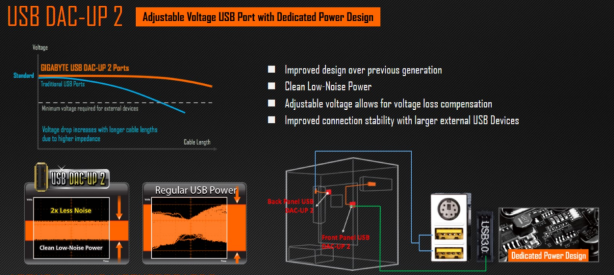
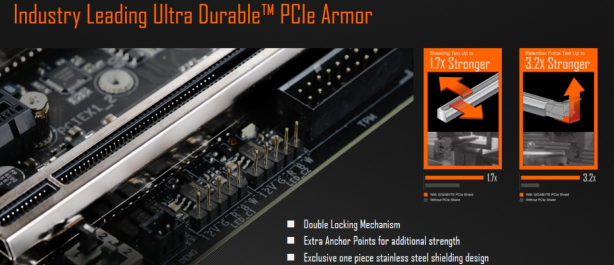
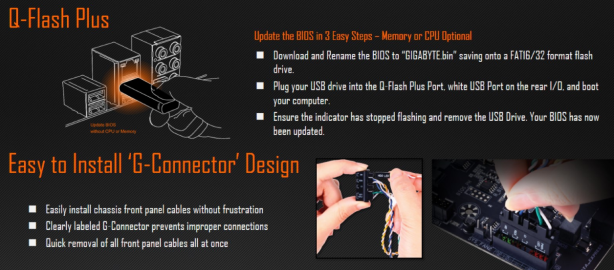
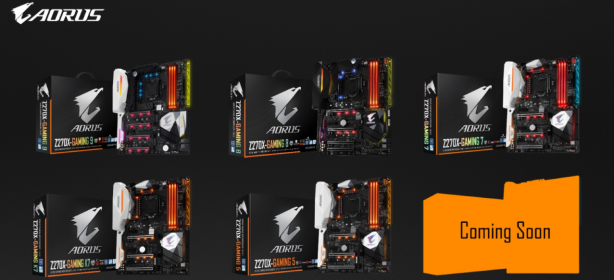
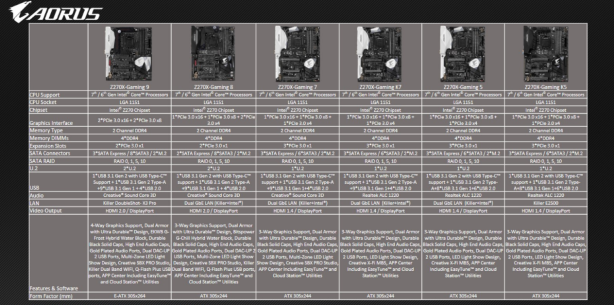


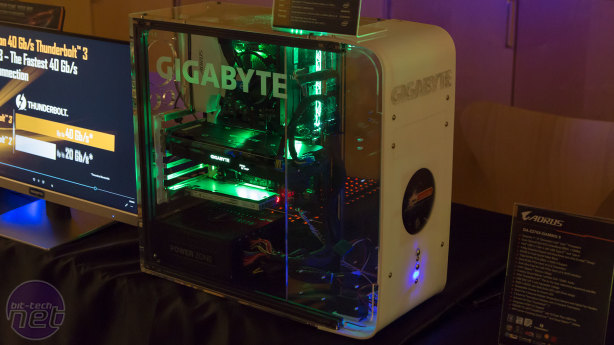
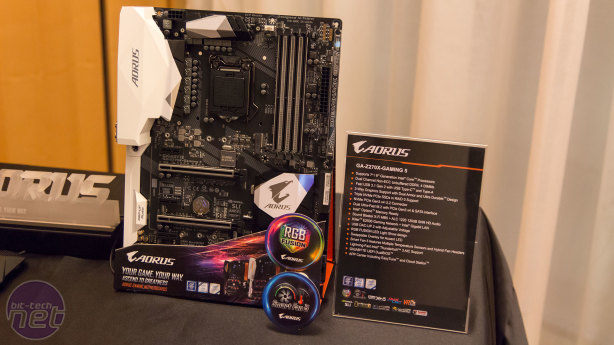
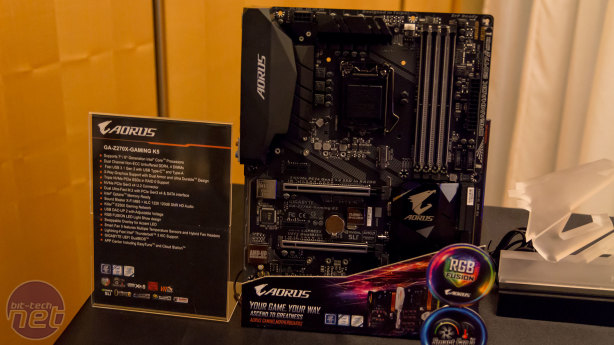








Want to comment? Please log in.